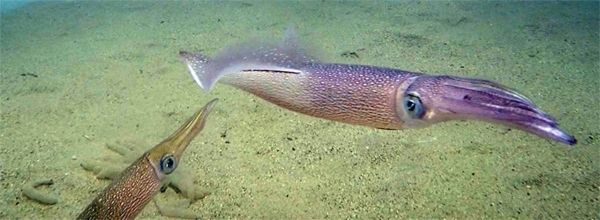Exposure to underwater pile driving noise, which can be associated with the construction of docks, piers, and offshore wind farms, causes squid to exhibit strong alarm behaviors, according to a study by Woods Hole Oceanographic Institution (WHOI) researchers published Dec. 19, 2019, in the journal Marine Pollution Bulletin.
“This study is the first to report behavioral effects of pile driving noise on any cephalopod, a group including squid, cuttlefish, and octopuses,” says lead author Ian Jones, a student in the Massachusetts Institute of Technology-Woods Hole Oceanographic Institution Joint Program in Oceanography.
Squid use natural alarm and defense behaviors like inking, jetting, and changing color and patterns on their skin for communication and also for survival when they’re trying to avoid capture. Squids’ changeable skin gives them the ability to create extraordinary camouflage, enabling them to blend into the background and avoid becoming a meal.
Jones and his colleagues in the Sensory Ecology and Bioacoustics Lab at WHOI exposed longfin squid (Doryteuthis pealeii) to pile driving sounds originally recorded near the construction site of the Block Island Wind Farm in Rhode Island. The squid exhibited the same types of natural alarm and defense behaviors when they were exposed to the noises, but it’s what they did next that surprised the researcher team.
Read more at Woods Hole Oceanographic Institution
Photo: Longfin squid (Doryteuthis pealeii) are an important species in the east coast squid fishery, which is valued at about $40 million per year. (Photo by Ian Jones, Woods Hole Oceanographic Institution)


